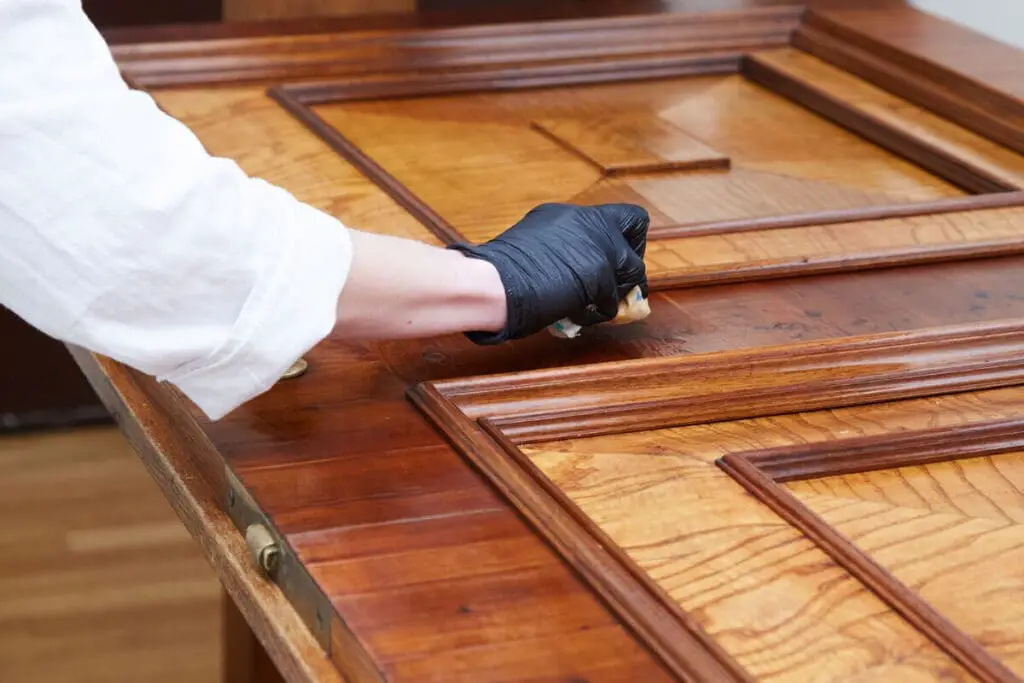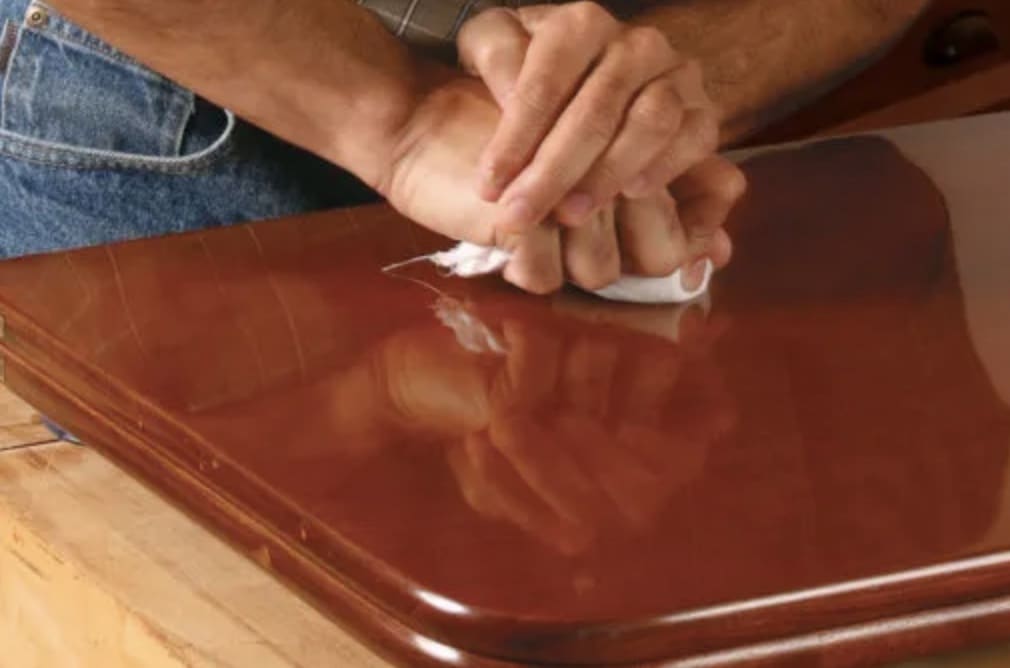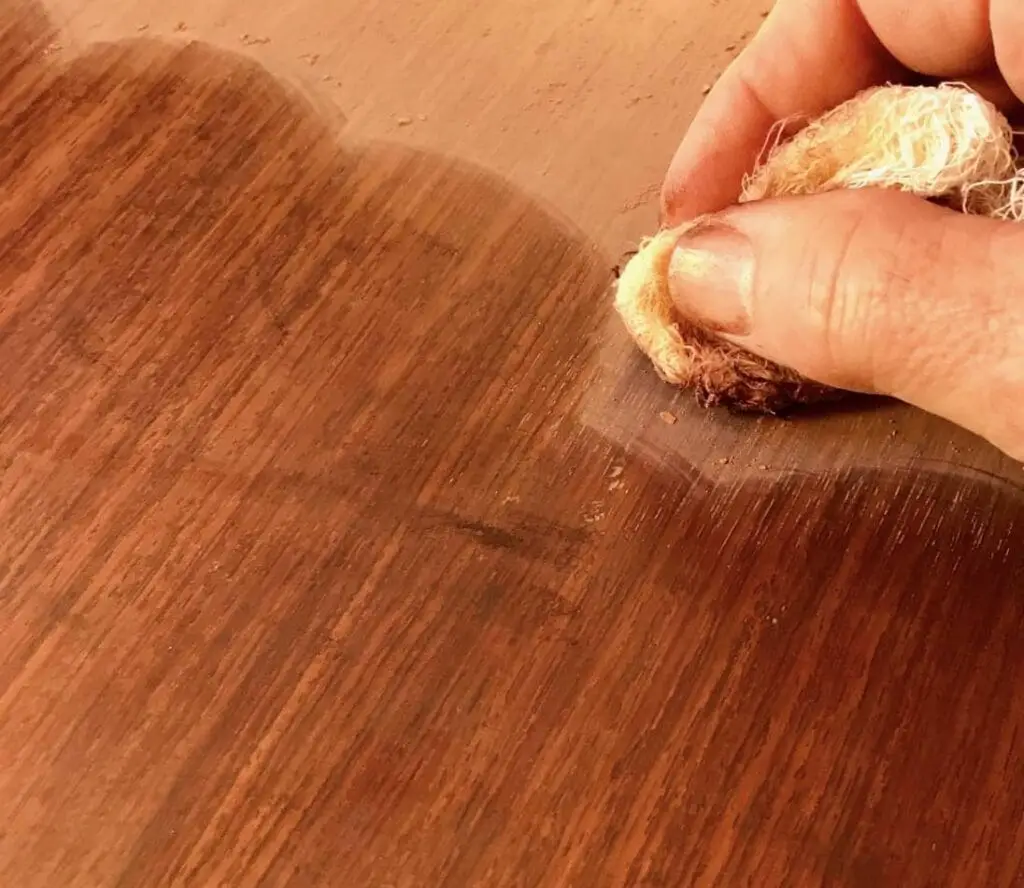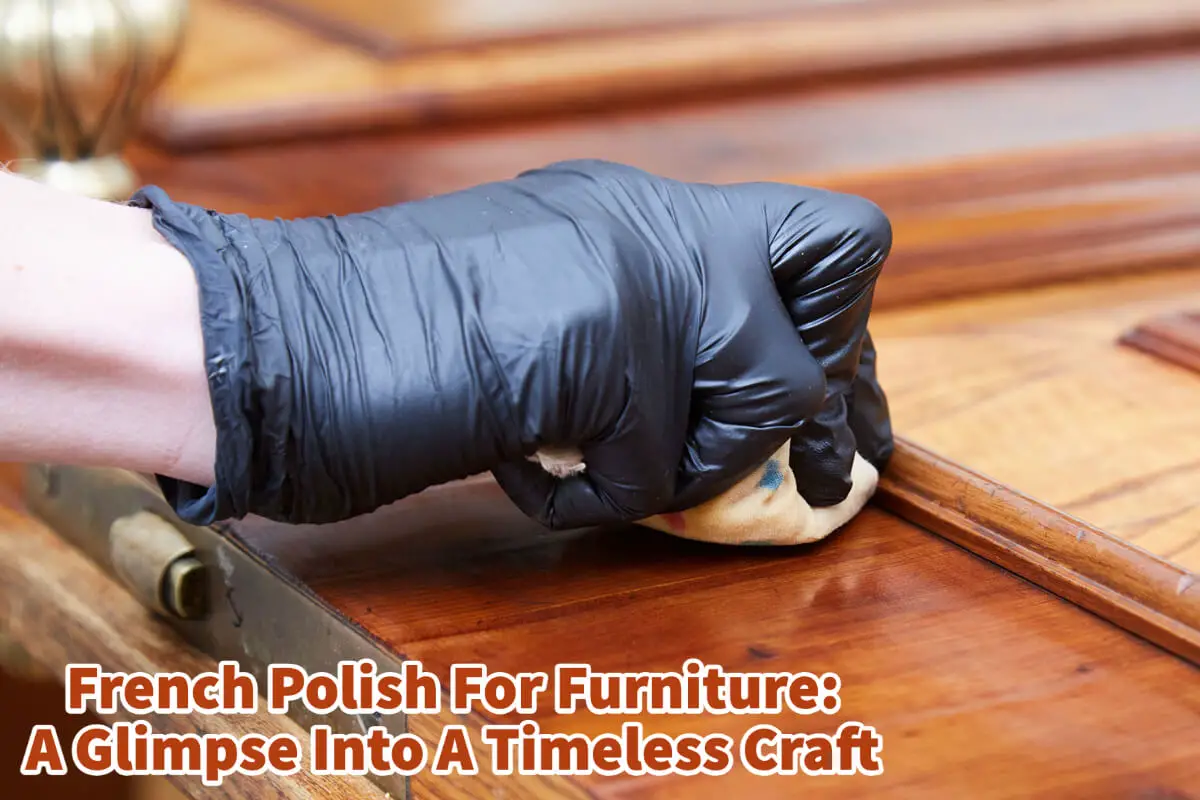This type of furniture finish has been around for a long time. It is the French-Polish for furniture. The French Furniture polish has a timeless appeal.
French polishing: two words that evoke images of antique wooden furniture gleaming with a lustrous, deep shine. It’s more than just a finishing technique; it’s an art that has stood the test of time. In this post, we’ll delve into French polishing and briefly journey through its rich history.
Table of Contents
- What Is French Polishing?
- The Decline And Resurgence Of French Polish
- The Elegance Of Shellac: A Classic Finish With Modern Utility
- Related Content
What Is French Polishing?
At its core, French polishing is a meticulous method of applying multiple thin coats of shellac onto wood, mainly wooden furniture. This gives the wood an incredibly high gloss finish and elevates its natural color and grain.

Shellac, the star ingredient in this process, is derived from the secretions of the lac beetle, primarily found in forests of India and Thailand. When these secretions are processed and dissolved in alcohol, it forms shellac polish.
The History Of French Polishing
The origins of French polishing trace back to France in the early 18th century, and it’s no wonder this technique bears the name of the country where it was popularized. It gained immense traction during the Victorian era when aesthetics and craftsmanship were paramount.
During this period, furniture was more than a mere utility; it reflected one’s status and taste.
Antique lovers and connoisseurs during the 19th century could easily differentiate between a regular piece of furniture and one adorned with French polish.
Prestigious timbers like Mahogany, Rosewood, and Walnut, often used to construct high-end furniture, particularly benefited from this treatment. The vibrant grains, patterns, and unique characteristics of these woods were enhanced manifold by the deep shine and warmth added by the French polishing technique.
While the results were undeniably stunning, achieving them was no simple task. The process was painstakingly labor-intensive. Artisans would spend countless hours applying layer upon layer of shellac, rubbing and polishing the surface until achieving that distinctive mirror-like finish.
The Decline And Resurgence Of French Polish
Despite its popularity, French polishing saw a decline around the 1940s. The world was changing. The onset of the industrial era brought machinery and innovations that revolutionized the furniture-making industry.
The demand for rapid production methods led to the rise of spray lacquers and synthetic finishes. They offered a faster way to achieve a polished finish, albeit at the cost of the depth and warmth only French polishing could provide.
However, as with many ancient crafts, French polishing didn’t disappear entirely. It found a niche among restoration experts and antique lovers who appreciated the authenticity and beauty it added to vintage pieces.

Today, in an age with a renewed appreciation for craftsmanship and authenticity, French polishing is seeing a resurgence. It’s sought after by those looking to restore antiques to their former glory and by discerning homeowners desiring a touch of vintage elegance in their modern settings.
With its centuries-old legacy, French polishing is a testament to the enduring appeal of craftsmanship. In a world constantly looking for the next technological advancement, there’s something deeply satisfying about knowing that some traditions, like French polishing, persist in their original form.
The depth, warmth, and richness it imparts to wooden furniture is unparalleled and a gentle reminder of the beauty of time-honored techniques.
The Elegance Of Shellac: A Classic Finish With Modern Utility
Shellac stands out as one of the most straightforward classic finishes to employ, imbuing wood with a delicate, pleasing finish that genuinely highlights the innate grain and beauty of the material. This finish finds its ideal match in woods such as walnut, mahogany, and select veneer woods, where its unique qualities genuinely shine.
Beyond its visual appeal, shellac is the foundation for the esteemed French polish, which adorns the most exquisite furniture pieces.
Applying shellac is a process that necessitates precision. It’s typically laid down in several svelte coats, with the advantage of a swift drying time. After only four hours, a new coat can be added. Yet, this swiftness does have its downsides.
Due to the multiple coats needed, there’s a margin for application errors. However, one of the strengths of shellac lies in the ease of correcting these slip-ups.
Yet, every rose has its thorn. For all its beauty and ease of application, shellac has a noted vulnerability. It is notably less resistant to damage compared to other finishes. Direct contact with water or alcohol can easily dissolve a shellac finish.
An unfortunate side effect that many have experienced is the appearance of unsightly white rings. Furthermore, its susceptibility to moisture is evident when applied in humid conditions, often resulting in a white-hued finish.

Over time, moisture absorption can lead to a hazy or even whitened appearance. This necessitates periodic touch-ups, even though the repair process is straightforward.
Despite drying to a soft finish, a protective layer, such as wax, can enhance its durability. Shellac excels when used on pieces more for decoration than daily rigorous use.
Selecting the right shade or cut of shellac largely depends on the specific wood of the furniture piece you’re working with.
While shellac might have vulnerabilities, it remains a favored choice for many due to its unique aesthetic charm and historical significance in furniture finishing.
Whether you’re an antique lover, a woodworking enthusiast, or someone captivated by the charm of the bygone eras, French polishing is a technique worth exploring and preserving for future generations.
Find out more about how Mondoro can help you create, develop, and manufacture excellent home decor and furniture products – don’t hesitate to contact me, Anita. Check out my email by clicking here or become a part of our community and join our newsletter by clicking here.
Mondoro gives out a FREE Lookbook to anyone interested. You can receive a copy of our latest Lookbook by clicking here.
Listen to our Podcast called Global Trade Gal. You can find it on all major podcast platforms. Try out listening to one of our podcasts by clicking here.
Subscribe to our Mondoro Company Limited YouTube Channel with great videos and information by clicking here.
Related Content
Is Real Wood Furniture Worth The Extra Cost?
Real wood furniture costs can vary due to the types of solid wood being used and the grade of the wood. Not all real wood furniture is worth the extra cost, especially if the wood they use is substandard and poorly constructed.
You can discover more by reading Is Real Wood Furniture Worth The Extra Cost? by clicking here.
What Color Is Expresso Furniture?
The Expresso color in furniture is a black-brown color with some red and gold highlights showing through the color. The expresso color furniture can look more like indirect brown light and more like black in a dimly lit room.
You can discover more by reading What Color Is Expresso Furniture? by clicking here.
Is Horsehair Used In Upholstery?
Horsehair is found today in mainly antique furniture that has been restored. You can still purchase horsehair or horse and hog hair to upholstery your antique furniture piece. Today most sofa and cushion manufacturers will use polyurethane foam, down, and feathers, not horsehair.
You can discover more by reading our blog, Is Horsehair Used In Upholstery? by clicking here.


